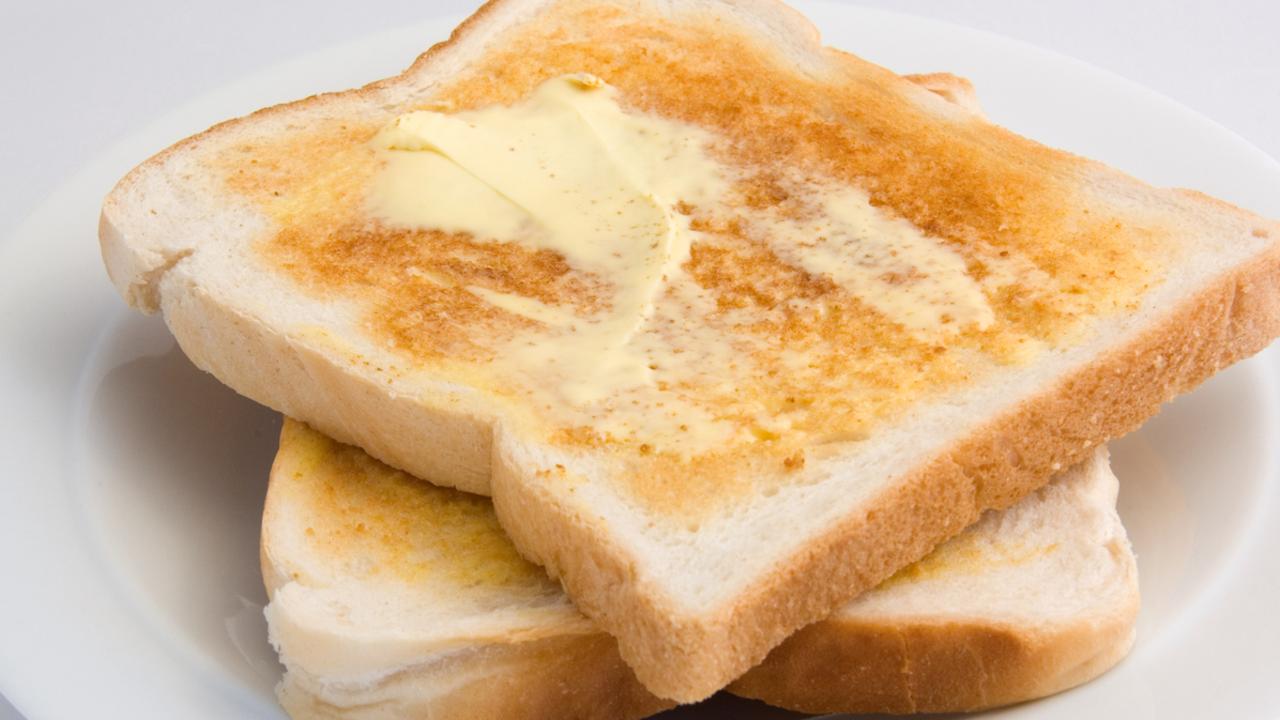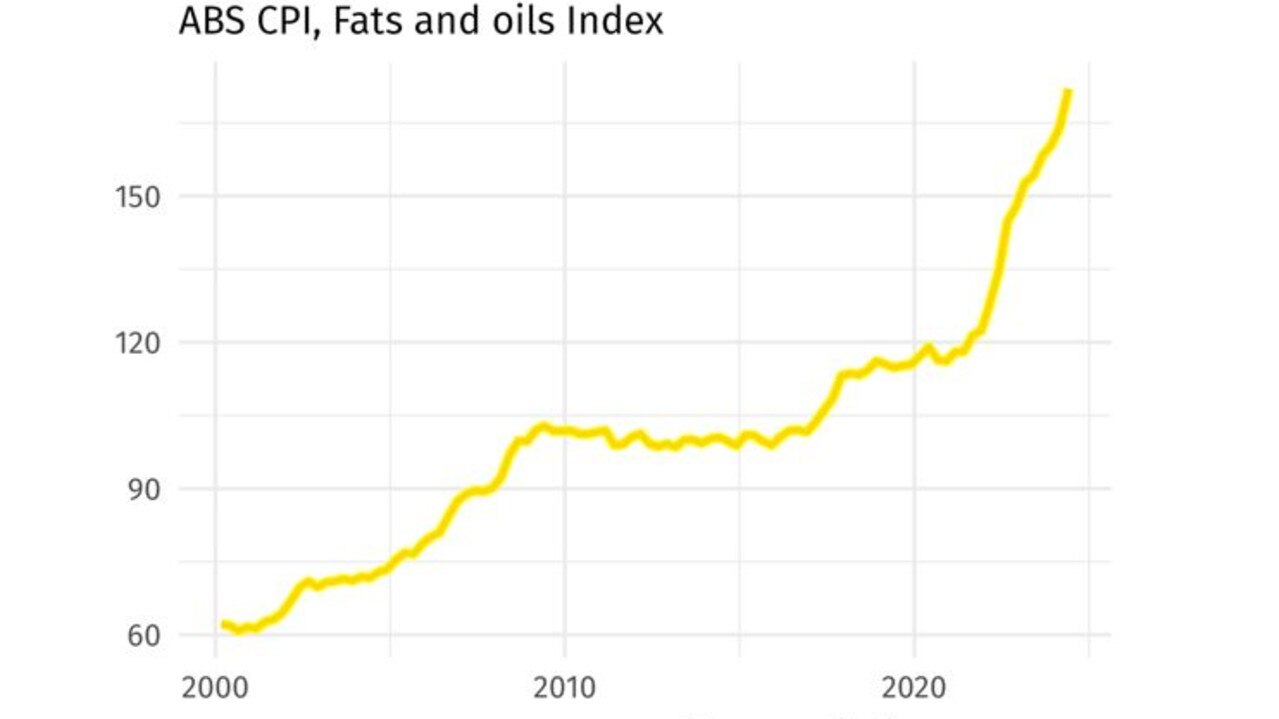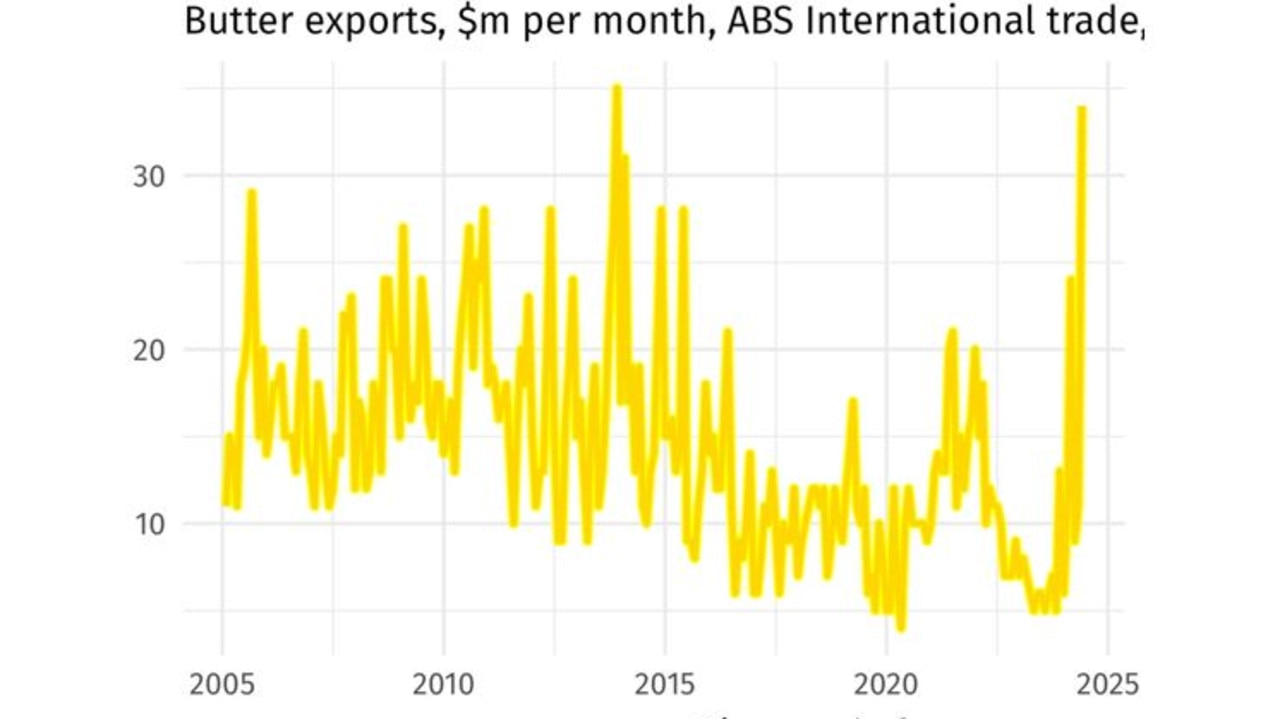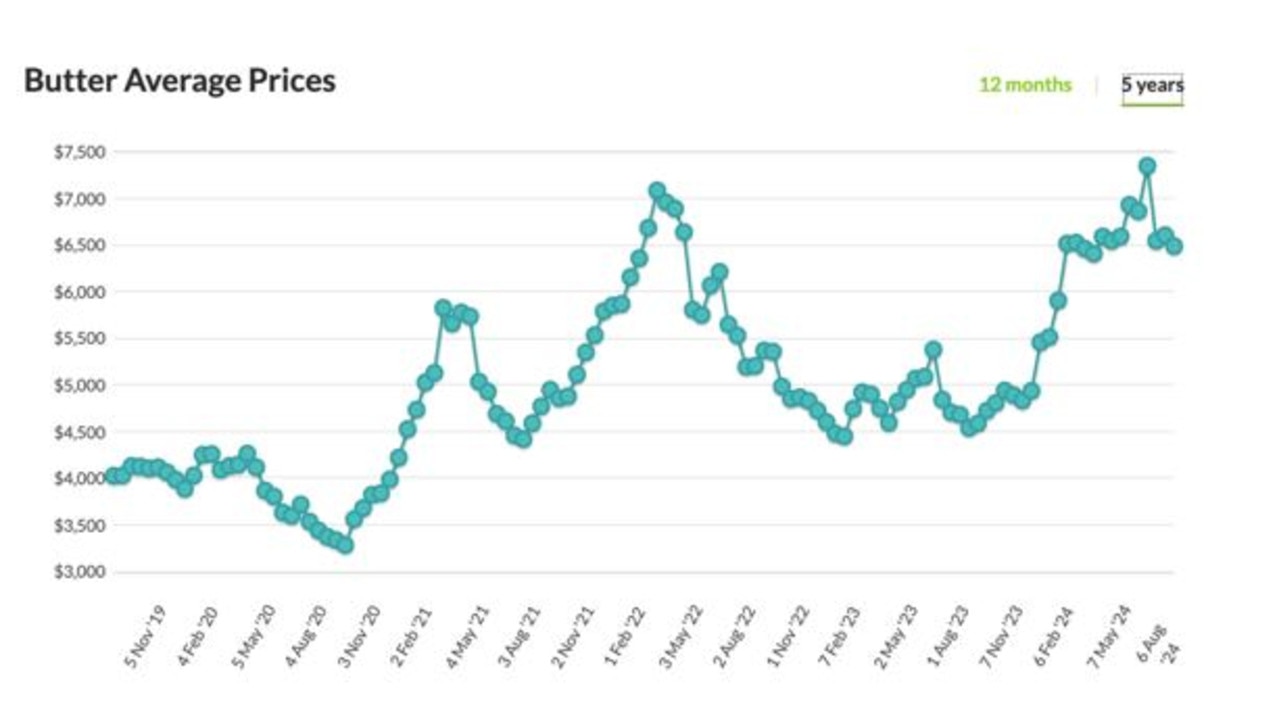‘Skyrocketing’: Australian grocery staple you can no longer afford
It’s an everyday item most of us used to chuck in our trolleys without thinking – but new data proves those days are long gone.
Butter’s back on the menu.
The great wheel of nutrition science has turned once more and butter is once more the golden child. Thank goodness, I say. Who doesn’t love a pat of the good stuff melting into a steaming potato or spread onto a slice of toast?
My enthusiasm for butter runs deep and true, but there’s one thing standing in the way. The price.
The butter situation is crazy. Maybe they were right about butter giving you a heart attack, but the reason isn’t cholesterol, it’s your grocery bill.

A 500g pack wrapped in humble paper can set you back as much as $8 to $10 these days, and that’s without even getting into fancy organic butter from single origins.
If you’ve already noticed this, you’ll be pleased to hear the data proves you right. Butter has gone up. It is in the fats and oils category, which is officially one of the fastest-rising categories in the supermarket.

I eat keto sometimes (that’s the diet where you cut out carbs and have fats instead) and it makes me notice the price of butter a lot. Coating a bunch of green veggies in canola oil might make financial sense, but it just doesn’t have the same luxurious feeling as bathing them in butter.
So where’s the price rise coming from? Cows are still out there, making milk. And butter still comes from milk, I’m pretty sure. Dairy Australia’s latest statistics say we produced 3 per cent more milk and 8 per cent more butter in 2023-24 than in the previous year. Why has it gone up?
Turns out we’re eating slightly less butter recently, (and quite a bit less margarine). So it’s not that we’ve gone butter crazy. Instead, it’s about everyone else.
Part of the issue seems to be we recently started exporting butter again. After a period where we didn’t export much, the fat of our land is once more heading overseas. The most recent month of exports was the second highest on record. (We also import some butter – fancy stuff from New Zealand, mostly – but we are still a net butter exporter, according to recent data).

Why does the rest of the world want our butter? Because the global price has gone up. So it’s not just us paying more for butter, it’s everyone.
There’s a global event every few weeks called the Dairy Trade auction. And the last dozen of those have seen unusually high prices bid for butter, as the next chart shows.

So European butter prices are also skyrocketing. For a continent as keen on eating butter as the Europeans are, that’s very bad news. The French supposedly consume more butter than anyone – a whopping 8kg a person per year, according to some sources.
I’ve dug deep into the reasons here and it all goes back to the global rise in food prices that came after lockdowns, when Russia invaded Ukraine. The price bursts were in things like wheat and meat first, and then the issue keeps spreading to other categories. Now it’s butter.

A lot of milk has been sent off to the cheese factories recently as the cheesemakers try to meet record demand for cheese (certainly I’ve noticed cheese prices rising last year).
That has seen less milk available for butter production – so now we get a butter spike.
At the same time, another issue hitting global dairy supply is cow flu.
The H5N1 strain of bird flu has crossed over to dairy cows in 13 states in America. That’s causing a ruckus because a dairy worker caught flu from a cow and the last thing we need is another virus crossing over from animals to people. Rules on dairy farms are making it hard for them to produce as much milk as usual.
It all adds up to a big butter bust up.
The canola fields of Australia are flowering at the moment and no doubt the farmers who grow that crop are rubbing their hands in anticipation. Perhaps margarine prices will be the next to surge.
Jason Murphy is an economist | @jasemurphy. He is the author of the book Incentivology






